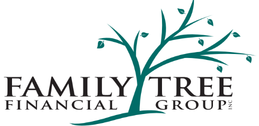Tax rules for retirees turning 65 or 71
Turning 71 in the year, and you have a registered retirement savings plan (RRSP) and/or a locked-in retirement account (LIRA).
By December 31, 2024 your RRSP and LIRA will have to be closed.
You have 3 options. Any option can be used alone or in combination with one or both other options:
1. Make a withdrawal
- The withdrawal can be in cash or in-kind.
- You can choose the amount.
- The amount withdrawn is included in your income for tax purposes in 2024
2. Purchase an annuity
- Annuity payments must commence in 2025 but could begin in 2024. It’s your choice. As well, you can choose the frequency of these payments, but as a minimum, they must be received annually, commencing in 2025.
- Annuity payments are included in your income for tax purposes when received.
3. Open a registered retirement income fund (RRIF) and transfer amounts in cash or in-kind directly from your RRSP to the RRIF. In the case of a LIRA, a life income fund (LIF) is opened, and a direct transfer is made from your LIRA to the LIF.
- Withdrawals must commence in 2025 but could begin in 2024. It’s your choice. As well, you can choose the frequency of these payments, but as a minimum, they must be received annually, commencing in 2025.
- A minimum amount must be withdrawn from each RRIF or LIF, annually. This amount is based upon a prescribed schedule considering your age at the beginning of the year. No tax is withheld on these amounts.
- The maximum amount that can be withdrawn from a RRIF is the total account balance at that time, while the maximum amount that can be withdrawn from a LIF is based on a prescribed schedule considering your age at the beginning of the year. Tax is withheld on amounts withdrawn above the minimum amount.
- Withdrawals are included in your income for tax purposes when received.
Note that new proposed regulations would remove the maximum withdrawal for Québec LIF starting July 1st, 2024.
65 or older in 2024 and haven’t claimed the pension income amount credit of up to $2,000 (Federal)
If you earn ‘eligible pension income’, there is a federal pension tax credit of up to $2,000 available. This can produce federal tax savings of up to $300. There are provincial tax credits as well that increase your savings, so visit your Provincial or Territorial Department of Finance website to learn more.
You need at least $2,000 in eligible pension income to claim the full $2,000 federal tax credit. Pension income less than this reduces the credit amount dollar for dollar.
If you currently do not have eligible pension income, you may have the opportunity to create it. For example, by making an RRIF withdrawal at age 65 or older, within the year in which you turn 65. An RRSP withdrawal will not qualify for pension splitting or income credit unless under very specific circumstances (as examples: money received because of death of a spouse and in the form of a continued annuity). It needs to be turned into a RRIF first and the withdrawals will qualify after age 65.
Safeguard your Old Age Security (OAS)
OAS payments are reduced through a ‘clawback’ when your net income for tax purposes exceeds $90,997 for 2024. The clawback rate is 15% on every dollar of net income in excess of this amount.
If you need extra cash but your net income is close to the threshold for clawback, consider using tax-free TFSA withdrawals as opposed to taxable withdrawals from your RRSP or RRIF. As TFSA withdrawals are tax-free, they have no impact on your ‘net income’ number.
Information contained in this article is provided for information purposes only. Its not intended to provide or be a substitute for professional, financial, tax, insurance, investment, legal or accounting advice and should not be relied upon in that regard. It also does not constitute a specific offer to buy and/or sell securities. You should always consult your financial advisor or tax specialist before undertaking any of the strategies discussed in this article to ensure that all elements and your personal circumstances are taken into consideration in developing your individual financial plan. Information contained in this article has been compiled from sources believed to be reliable, but no representation or warranty, express or implied, is made with respect to its timeliness or accuracy and SLGI Asset Management Inc. disclaims any responsibility for any loss that may arise as a result of the use of the strategies discussed.

